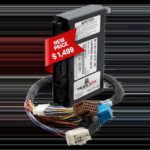If you’re experiencing a P0300 random misfire code on your Chevy Tahoe, several potential culprits could be at play. This article explores common causes, diagnostic steps, and potential solutions to help you get your Tahoe running smoothly again.
One common misconception is that disconnecting the O2 sensors resets the Powertrain Control Module (PCM). The correct way to reset the PCM is by removing the ECM/PCM fuses from the underhood electrical center or disconnecting the negative battery cable for 30 minutes. This clears the memory, allowing the PCM to relearn driving patterns. While Autolite spark plugs are generally acceptable, the 5.3L V8 engine often performs optimally with ACDelco 41-962 plugs. Using the incorrect spark plugs might contribute to misfires.
The quality of Autozone Duralast spark plug wires is debatable. While they come with a lifetime warranty, consider using higher quality wires from reputable brands. Additionally, the origin of Duralast ignition coils for your Silverado is a concern. Although they carry a lifetime warranty, using them should be a last resort.
Whether rattling inside the fuel injection rail is normal is unclear without further inspection. However, it’s unlikely to be the direct cause of a P0300 code.
Faulty catalytic converters can create excessive back pressure, contributing to misfires. Removing the upstream O2 sensors and driving briefly can help determine if clogged catalytic converters are a factor. If the engine runs smoother with the sensors removed, the converters likely need replacement.
A valuable diagnostic tool for troubleshooting is a Bluetooth OBD II dongle paired with an app like Torque Pro on an Android device. This setup enables real-time data monitoring, aiding in pinpointing the cause of the P0300 code. This will allow you to read the codes and pinpoint the problem cylinder. Then you can swap coils and or injectors to see if the misfire follows the swapped component.
Finally, consider fuel pressure and a possible vacuum leak.
In summary, addressing a P0300 code in a Chevy Tahoe requires a systematic approach. Start by ensuring you have the correct spark plugs, consider the quality of your spark plug wires and ignition coils, and investigate the condition of your catalytic converters. Utilizing a Bluetooth OBD II scanner with a diagnostic app can provide valuable insights. A thorough diagnosis will lead to a proper fix and a smoothly running engine.

